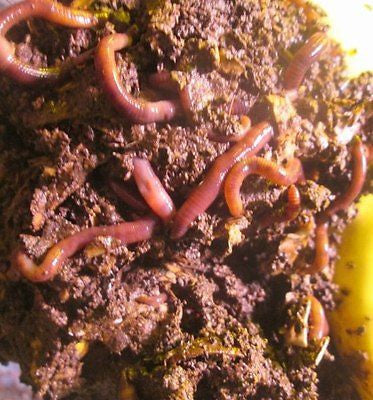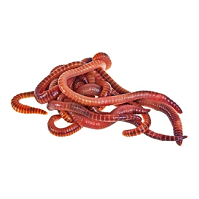Top-quality red worms: For sustainable soil care
Top-quality red worms: For sustainable soil care
Blog Article
Red Wigglers: Your Eco-Friendly Remedy for a Greener Garden
Red wigglers, or Eisenia fetida, offer a sustainable strategy to improving garden health and wellness through vermicomposting. By integrating red wigglers right into your gardening practices, you can successfully manage waste while nurturing a vibrant environment.
(red worms)
What Are Red Wigglers?
Although usually incorrect for regular earthworms, red wigglers (Eisenia fetida) are a distinct types understood for their effectiveness in composting natural matter. These worms flourish in rich, organic settings, such as compost stacks and vermicomposting systems, where they play an important role in damaging down waste. Unlike their more typical counterparts, red wigglers like a warmer environment, normally between 55 ° F and 77 ° F, which maximizes their activity and efficiency.
Red wigglers are identified by their reddish-brown coloration and fractional bodies, which can grow up to 4 inches in size. They possess a distinct capacity to eat and digest organic materials at an excellent price, processing as much as half their body weight daily. This fast decay procedure not only improves the dirt but additionally adds to the general health and wellness of the garden environment.
In regards to recreation, red wigglers are respected, with the ability of creating cocoons that have several eggs. This enables for fast population development, making them a perfect selection for composting undertakings. Their flexibility and ravenous hunger for organic waste position red wigglers as a crucial ally for ecologically aware garden enthusiasts seeking sustainable methods.
Benefits of Using Red Wigglers
Using red wigglers in the yard offers various benefits that improve both soil top quality and plant health and wellness. These earthworms are extraordinary decomposers, damaging down natural issue such as kitchen scraps and yard waste right into nutrient-rich spreadings. These spreadings, frequently described as "worm gold," offer necessary nutrients that boost dirt fertility, promoting vibrant plant growth.
Red wigglers also enhance dirt structure. Their burrowing task freshens the dirt, helping with better water infiltration and root infiltration. This results in a much healthier root system, which is vital for nutrient uptake and overall plant vitality. The presence of red wigglers increases microbial activity in the soil, developing a flourishing ecosystem that contributes to illness resistance and boosted plant wellness.
An additional considerable benefit of utilizing red wigglers is their capability to lower waste. In summary, incorporating red wigglers into gardening methods returns significant benefits, making them a useful addition to any type of eco-conscious yard.
(NC Worm Farms)
Just How to Beginning Vermicomposting
To start vermicomposting, it's necessary to produce an ideal environment for red wigglers to thrive, as their success directly influences the efficiency of the composting process. Start by selecting a container, such as a plastic or wood bin, with appropriate drain and air flow. A size of approximately 2 square feet is suitable for a family, permitting a manageable worm population.
Next, prepare bed linen material that is damp but not excessively wet. Shredded newspaper, cardboard, and coconut coir are superb selections, giving a comfy environment while additionally acting as a carbon source. Load the bin with 4 to 6 inches of bed linens.
After establishing the bed linens, introduce your red wigglers. A typical starting population is concerning 1 pound of worms, which can take in about half a pound of food scraps daily. It is crucial to add food scraps slowly, focusing on vegetable peelings, fruit waste, and coffee premises, while preventing meat, dairy products, and oily foods to stop smells.
Keeping a Healthy And Balanced Worm Bin
When your red wigglers are worked out right into their brand-new bedding, maintaining a healthy and balanced worm bin ends up being critical to make sure ideal composting conditions. Ideally, the worm bin should be kept damp but not soggy; a humidity degree around 60-70% is ideal.
Temperature level control is equally important. Red wigglers prosper in atmospheres between 55 ° F and 77 ° F(13 ° C to 25 ° C) Prevent revealing the container to extreme temperature levels; severe warmth can kill the worms, while too much cold can slow their activity.
Oygenation is essential to protect against anaerobic conditions, which can result in unpleasant odors and damage the worms. Transform the bedding gently every couple of weeks to promote air flow and disperse food equally.
Feeding your red wigglers is another crucial facet. Deal a well balanced diet plan of cooking area scraps, staying clear of citrus and spicy foods, which can be destructive to their health and wellness. By frequently keeping an eye on these variables, you can make certain a growing ecological community within your worm container.

Tips for Utilizing Worm Spreadings
Consistently integrating worm spreadings right into your yard can considerably boost dirt wellness and plant development. To efficiently make use of worm castings, start by establishing the proper application rate, which commonly ranges from 10-20% of the complete dirt volume. This makes certain optimal nutrient accessibility without frustrating your plants.
When applying worm spreadings, blend them into the leading few inches of soil around well established plants or incorporate them right into your seed-starting mix for new seedlings. This practice advertises origin advancement and enhances moisture retention. In addition, think about creating a worm tea by steeping worm castings in water for 24-48 hours. This nutrient-rich informative post liquid can be utilized as a foliar spray or dirt saturate, offering an instantaneous boost to your plants.

Final Thought
The application of red wigglers in gardening techniques offers a sustainable strategy to waste administration and soil enrichment. The assimilation of red wigglers right into gardening regimens inevitably supports both ecological equilibrium and agricultural performance. red worms.
Report this page